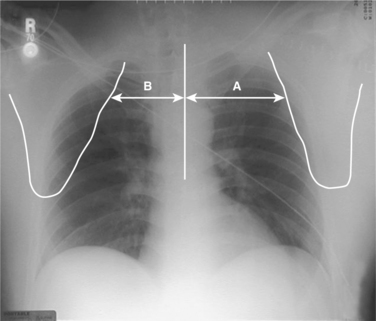CHAPTER 72 SCAPULOTHORACIC DISSOCIATION AND DEGLOVING INJURIES OF THE EXTREMITIES
Scapulothoracic dissociation (STD) is the traumatic disruption of the shoulder from the chest wall. It is characterized by a complete loss of scapulothoracic articulation, typically with intact skin. Vascular and neurologic injuries are common, and when severe, the result is essentially a closed forequarter amputation.1 Degloving injuries may occur to any extremity, with widely variable severity. The chapter will primarily address STD, with brief mention of the concepts associated with the management of degloving injuries.
INCIDENCE
The first report of STD was published in 1984 by Oreck and colleagues.2 The literature on the topic consists mainly of case reports, small case series, and reviews.1 One of the largest reported series consists of 25 patients, treated over a 24-year period.3 Thus, one can expect to see a case of STD approximately once a year at a major trauma center. Extremity degloving injuries, on the other hand, are much more common.
DIAGNOSIS
The pathognomonic radiographic finding in STD is lateral displacement of the scapula on an anteroposterior (AP) chest x-ray.4 The degree of displacement may be quantified by the scapula index. This is calculated by measuring the distance from the thoracic vertebral spinous processes to the medial border of the scapula, and dividing the distance on the injured side by that on the uninjured side (Figure 1). It requires an AP chest x-ray in a supine patient with nonrotated extremities, and an uninjured shoulder.5 In the uninjured population, the scapula index averages 1.07 (±0.04).6 Zelle and colleagues3 reported an average index of 1.29 (±0.19) in a series of 25 patients with STD, but the diagnostic threshold is not well established. They noted that five of their patients had a scapula index within two standard deviations of the “normal” mean, and cautioned that it be used as a screen but not a definitive diagnostic test. Lange and Noel7 suggested simply that a difference of greater than 1 cm suggests STD, while Ebraheim and colleagues8 described alternative measurements from the sternal notch to the coracoid or glenoid margin. Because the accurate measurement of the scapula index requires a standardized x-ray and is affected by patient positioning, it is prudent to look for other clues such as distracted clavicle fractures and acromioclavicular or sternoclavicular joint disruptions, and to consider the overall clinical picture, in determining the possibility of STD.
Associated vascular injuries are very common. In a review of the literature, Damschen and colleagues4 found that 88% of patients with STD had vascular injuries. More recently, in their large single-institution experience, Zelle and colleagues3 reported vascular injuries in 16 (64%) of 25 patients. Duplex ultrasonography may be employed to document arterial flow, but arteriography is indicated in stable patients in whom STD is diagnosed or suspected, as it provides more definitive imaging. The subclavian, axillary, and brachial arteries should be interrogated.
Neurologic injury is also very common with STD. Damschen and colleagues4 reported from their literature review that 94% of patients had a neurologic injury; in the series of Zelle and colleages,3 the incidence was 80%. The precise extent of injury can be difficult to determine initially. Complaints of severe pain in an anesthetic extremity are consistent with nerve root avulsion,1 but a history and physical exam predict the site of injury in just 30%–50% of cases.9 Evidence of concomitant spinal cord injury should be sought when there are any neurologic abnormalities. Computed tomography (CT) scanning and magnetic resonance imaging (MRI) may be complementary in the evaluation of these patients. A CT scan demonstrating paraspinous hematoma would be consistent with nerve root avulsion, and suggests that cervical myelography should be done.6 In the case of incomplete motor deficits, MRI is preferred.10 The T1-weighted images highlight the fat content of the spinal cord and nerve roots; the T2-weighted images highlight the water content and can demonstrate a pseudomeningocele that would suggest nerve root avulsion.1 Electromyography (EMG) studies are useful in identifying the involved nerve roots and showing evidence of denervation.9
The diagnosis of an extremity degloving injury is usually obvious on inspection, although flap viability can be difficult to determine. It is important to ascertain the presence of concomitant bony fractures, ligamentous injuries, or joint dislocations, as well as the neurovascular integrity of the extremity. This is done by thorough physical examination. The Morel-Lavallee injury deserves special mention. This is a closed degloving, in which the skin is detached from subjacent layers by a shearing force but remains intact.11 While it may not require any special treatment, it may result in skin necrosis or abscess. Additionally, if one makes an incision to operate in the area, it generally obligates open wound management.










